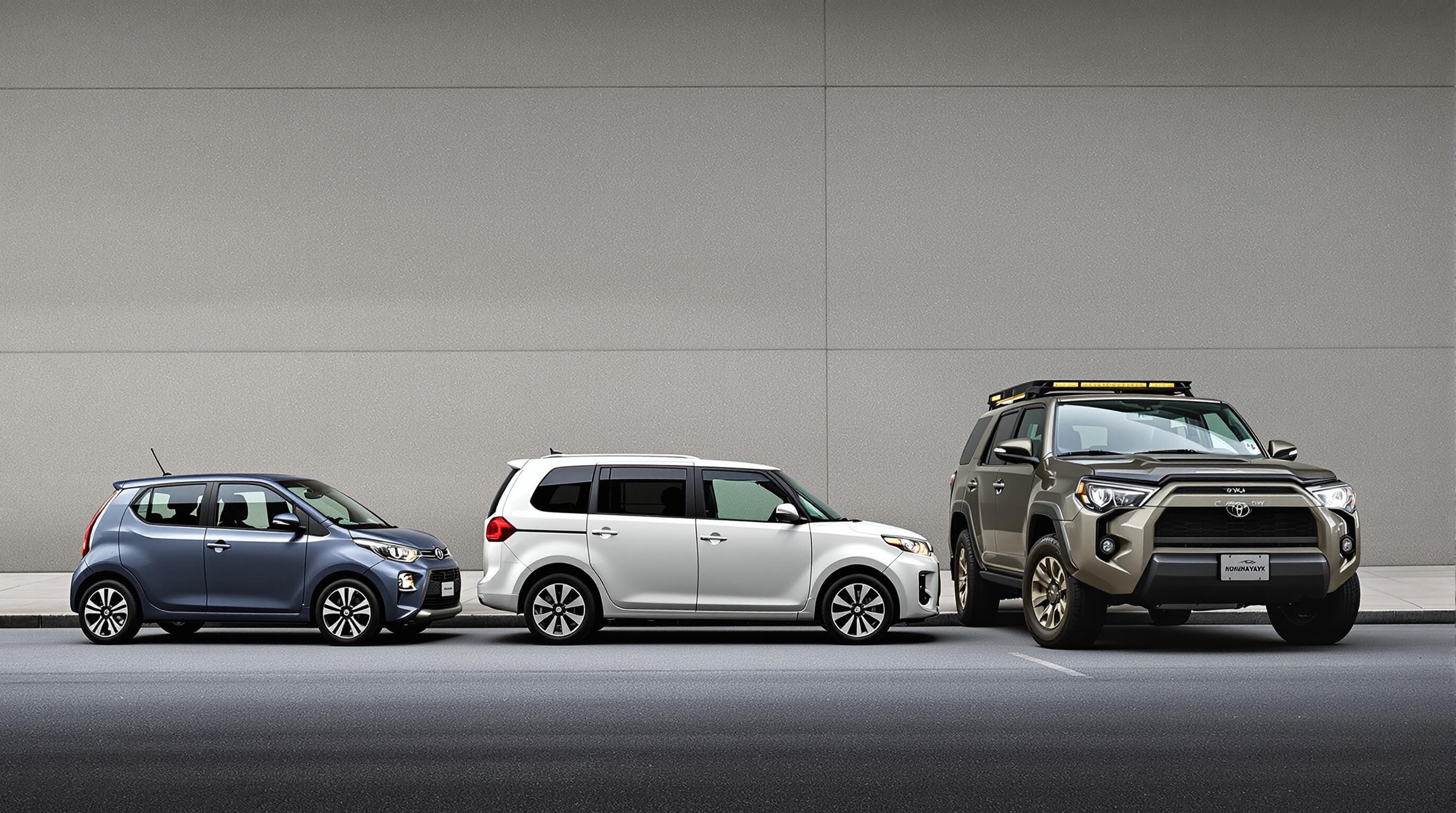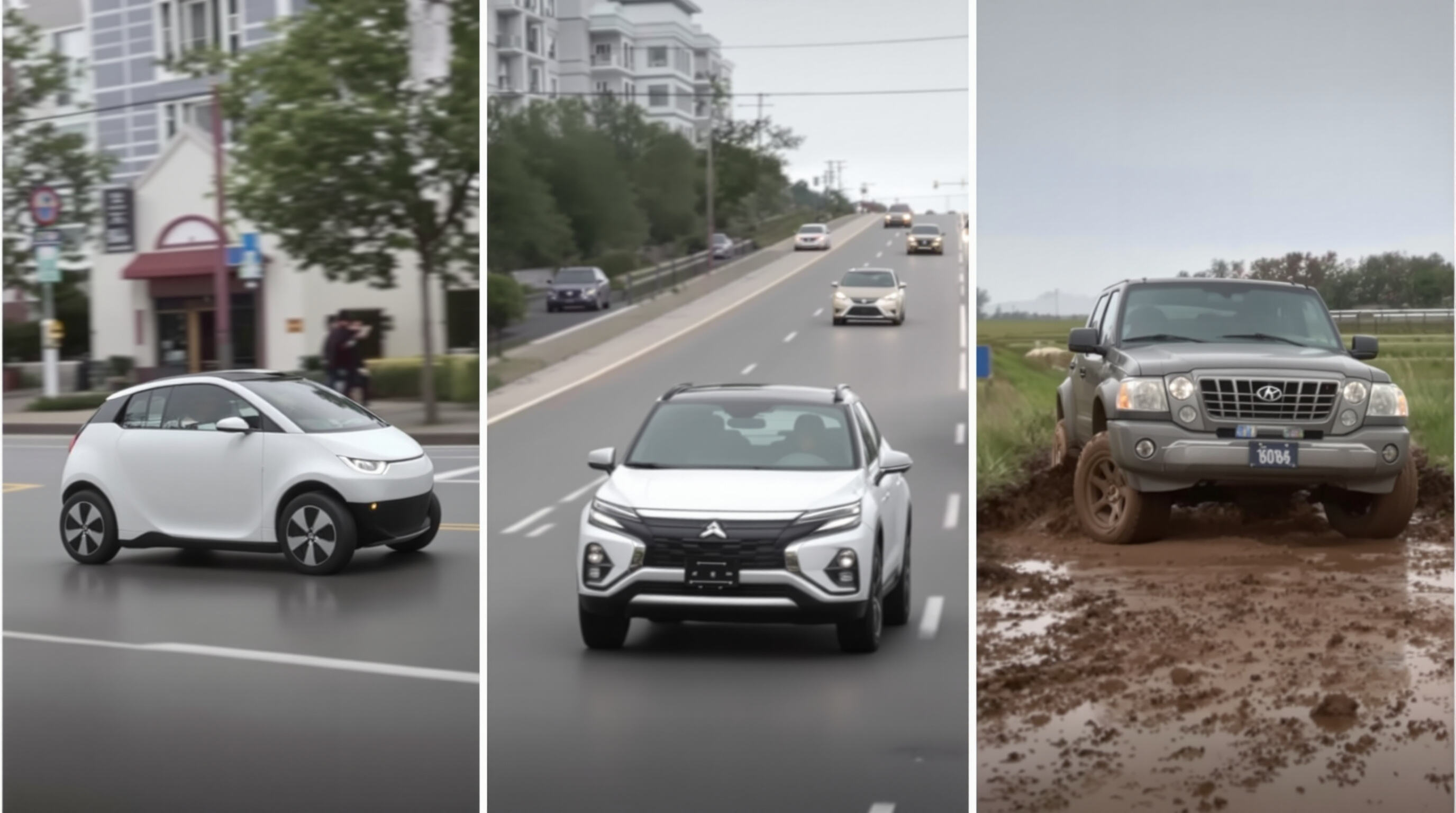Assessing Your Lifestyle and Driving Habits
Understanding Your Daily Driving Needs by Lifestyle
City dwellers who clock around 30 miles each day need something completely different from folks in the suburbs zipping back and forth for just a few miles. The European Environment Agency did some research last year showing that when people speed up constantly in stop-and-go traffic, their cars burn about 25 to maybe even 30 percent more gas than if they were cruising steadily on highways. Green minded folks tend to gravitate toward hybrid models these days, but anyone doing lots of highway driving probably wants something with better seating and those fancy cruise control features that adjust automatically. There's actually a handy resource called the 2025 Fuel Efficiency Guide out there that matches how people drive with what kind of car works best for them.
Commuting vs. Leisure Driving: Matching Vehicle Use to Routine
Vehicles used for 45-minute highway commutes benefit from high fuel efficiency (35+ MPG) and noise-reduction features. Weekend adventurers, on the other hand, need ground clearance of at least 8.2 inches and all-wheel drive. Households splitting driving 60/40 between commuting and leisure often choose crossover SUVs that balance both needs.
Personalizing Your Vehicle Choice to Fit Life Priorities
Safety-focused families: Prioritize vehicles with top IIHS crash ratings and rear-seat alerts.
Eco-conscious buyers: Consider EVs with 250+ mile ranges and DC fast-charging capability.
Budget-minded owners: Evaluate total 5-year ownership costs, including insurance, which can vary up to 40% between vehicle types.
Evaluating Frequency, Distance, and Driving Environment
- Daily mileage: Under 20 miles? EVs reduce refueling stops. Over 50? Hybrids maximize fuel savings.
- Terrain: Front-wheel drive works for paved roads; rural drivers should consider 4WD with hill descent control.
- Parking: Urban environments require turning circles under 36 feet, while suburban garages can accommodate full-size trucks (average length: 19.5 feet).
Matching Vehicle Types to Key Lifestyles

Urban Living: Compact Cars and Electric Vehicles for City Driving
For navigating dense neighborhoods and tight parking, compact cars and EVs are ideal. In cities like Paris and Milan, 78% of commuters prefer vehicles under 14 feet long for easier maneuverability. Electric models offer silent operation and zero emissions—key advantages for environmentally conscious city dwellers.
Family Life: Minivans and Three-Row SUVs for Space and Safety
Families needing 5–8 passenger seating should look for vehicles with standard rearview cameras, advanced collision avoidance, and over 150 cubic feet of cargo space. LATCH anchors and rear door child locks are essential for young families, while minivan sliding doors simplify school drop-offs.
Adventure-Oriented Lifestyles: SUVs and Trucks with Off-Road Capability
Off-road driving requires at least 8.5 inches of ground clearance and electronic traction control. Features like skid plates, hill descent assist, and selectable 4WD modes enable safe trail exploration while maintaining daily drivability on highways.
Hybrids and EVs for Eco-Conscious Commuters
Hybrids suit drivers covering 30–60 miles daily, combining electric efficiency with gas-powered range. Plug-in hybrids offer 15–50 miles of electric-only range—enough for most suburban errands—cutting annual fuel costs by $600–$1,200 compared to conventional engines.
Evaluating Passenger and Cargo Space Needs
Family Requirements: Seating Capacity, Comfort, and Safety Features
When thinking about family vehicles, the seating arrangement really matters for fitting car seats, strollers, and all the usual stuff parents carry around. Most three row SUVs and minivans come with somewhere between seven to eight seats plus adjustable leg space for everyone to stretch out. The latest models often include advanced safety features such as blind spot detection and automatic brakes that help prevent accidents, cutting down risk by roughly 25% or so according to some studies, especially helpful when there are multiple kids in the house. Don't forget about things like proper ventilation at the back, easy access through doors, and where those LATCH anchors actually sit since these details make all the difference during long trips or daily commutes.
Cargo Capacity for Hobbies: Pets, Sports, and Outdoor Gear
The amount of cargo space needed really depends on what someone actually needs to carry around these days. Think about all those weekend warriors dragging along dogs, bicycles, and gear for camping trips. Most compact crossovers come with around 35 to 40 cubic feet of space which works fine for short getaways. Hatchbacks and wagons take things further with their split fold seats that can accommodate bigger stuff when needed. For folks who need even more room, installing roof racks or getting a trailer hitch opens up possibilities for transporting kayaks or extra storage containers. Just keep in mind that adding these accessories tends to cut down on gas mileage somewhere between 5% and 10%, so it's worth considering how often that extra space will actually be used versus the cost at the pump.
Flexible Interiors: Fold-Flat Seats and Modular Storage Solutions
Modern vehicles increasingly feature fold-flat second-row seats, removable consoles, and under-floor storage. In EVs, modular interiors allow quick reconfiguration from grocery runs to DIY hauling. These adaptable designs reduce the need for multiple vehicles by 18% among active households, per 2023 consumer surveys.
Trunk and Boot Space: Practicality for Daily and Weekend Use
When thinking about trunk space, consider what gets loaded most often. A standard trunk around 15 cubic feet will hold about four or five grocery bags comfortably. For families hitting the road, anything over 30 cubic feet makes all the difference when packing suitcases and weekend essentials. Many modern SUVs come equipped with those handy automatic liftgates that open at the wave of a foot, which is great for hauling heavy items without bending down. The interior usually has some kind of water-resistant lining too, so accidental spills from drinks or wet umbrellas don't turn into disasters. City dwellers tend to go for sedans with smaller trunks since they fit better in tight spots during parallel parking situations. But let's face it, those compact spaces can be frustrating when trying to fit larger items like sports equipment or seasonal decorations.
Adapting Vehicle Choice to Driving Environment

City Driving: Maneuverability, Parking, and Fuel Efficiency
Compact vehicles with turning radii under 11 meters reduce parking collisions by 30%, according to the Urban Mobility Institute (2023). Prioritize models with 45+ MPG combined fuel economy and camera-assisted parking to handle congestion. Subcompact EVs excel in city environments with average speeds under 25 mph, eliminating idling emissions.
Highway and Road Trips: Stability, Comfort, and Range
Midsize sedans and crossovers with 300+ mile ranges minimize refueling stops on long trips. Predictive cruise control—adjusted using elevation data—reduces driver fatigue by 22% during drives over four hours. Look for noise cancellation and adaptive suspension that stiffens at higher speeds for improved stability.
Rural and All-Weather Conditions: AWD, 4x4, and Traction Systems
All-wheel drive with terrain response modes improves traction by 40% on gravel or dirt roads compared to front-wheel drive (Off-Road Safety Collective, 2024). SUVs and trucks with 9.5+ inches of ground clearance and hill descent control safely navigate flooded or muddy rural roads, which make up 58% of U.S. rural routes.
Cold-Weather Features: Heated Seats, Remote Start, and Winter Tires
In subzero climates, engine block heaters rated to -20°F and heated windshield wipers reduce cold-weather accidents by 34% (National Weather Safety Board, 2023). These features should be paired with winter tires, which shorten stopping distances on ice by 30% compared to all-season tires.
Long-Term Value and Lifestyle Alignment
Balancing Initial Cost with Lifestyle Fit and Resale Value
When picking out a car, it really pays to think about what fits within the budget while still meeting future requirements. Small electric vehicles tend to cut down on fuel costs by around eight hundred dollars each year according to Kelley Blue Book from last year. On the flip side, bigger SUVs usually hold onto about sixty to sixty-five percent of their original price tag even after five years on the road, which matters a lot for households expanding over time. For people living in cities, hybrid cars generally sell quicker in the used market compared to traditional gasoline models, sometimes as much as fifteen percent faster. And interestingly enough, cars that actually fit how someone lives day to day tend to keep twenty to thirty percent more value when they're eventually sold versus those that don't quite match up with daily routines.
Sustainability and Future-Proofing Your Vehicle Choice
More people thinking about the environment are starting to look at cars through their whole life cycle these days. The International Energy Agency reported back in 2024 that around 42 percent of folks shopping for new cars are seriously considering electric vehicles or hybrids. Governments throw in some help too, with rebates covering anywhere from 10 to 25% of what someone pays upfront for an EV. And manufacturers are building cars with modular platforms these days, so owners can upgrade things like battery packs down the road when technology improves. A recent sustainability report from 2024 found that nearly seven out of ten consumers view cars that last longer and adapt well as smart choices ethically speaking. Plus, cars designed for easier maintenance combined with those handy software updates sent wirelessly keep vehicles relevant even as our lives evolve and our needs shift over time.
FAQ
What vehicle type is best for city dwellers?
Compact cars and electric vehicles are ideal for city dwellers due to their maneuverability and silent operation.
How do I choose a vehicle for both commuting and leisure activities?
Crossover SUVs are a balanced choice for households that split driving time between commuting and leisure.
What should families prioritize when selecting a vehicle?
Families should prioritize vehicles with top safety ratings, seating capacity, and features like rearview cameras and child locks.
How can I align vehicle choice with eco-conscious values?
Consider electric vehicles or hybrids with good fuel efficiency and range, combined with sustainability rebates and upgrades.

